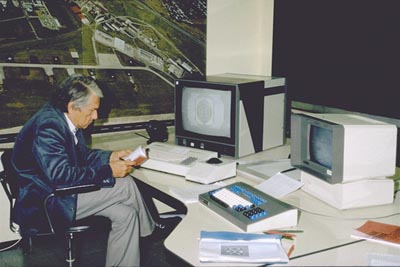
 |
|||
| Herbert W FRANKE |
|
Practice
This is an archive of the Digital Art Museum for historical reference. |

'If one is engaged, as we are, with an inventory of all mathematical branches and with an interest in visualising all forms that come to light, one can obtain plenty of forms, shapes and structures never seen before - an expansion of our treasury of forms. Many of these forms have considerable aesthetic charm. According to the usual criteria we cannot call them original works of art. But they can be considered elements available for new creations and can be used to develop artworks.' (Leonardo Vol 28, No.2 June 1995) The above quote gives a clue to Franke's practice. He is not primarily an artist, but his pioneering involvement with an emerging artform has helped develop the medium. His consistent involvement and innovation for a period of nearly fifty years has secured him a place as an important contributor to the field, and an inspiration to others. Franke has pursued the algorithmic as a basis for art, and also taken each development in the new technologies and applied his visual curiosity to its potential. This includes the oscilloscope, plotters, milling machines, the first inkjet printers ever available in Europe, and the capabilities of smaller home computers and PCs as they emerged. His interest in 'algorithmic aesthetics' has an important place in art theory emerging from Germany. We could say that Franke's project, the visualisation of 'all mathematical branches' as a basis for art is still in its early days, and the artists of the 21st century still have a relatively unexplored treasury for new artforms.
|
|||